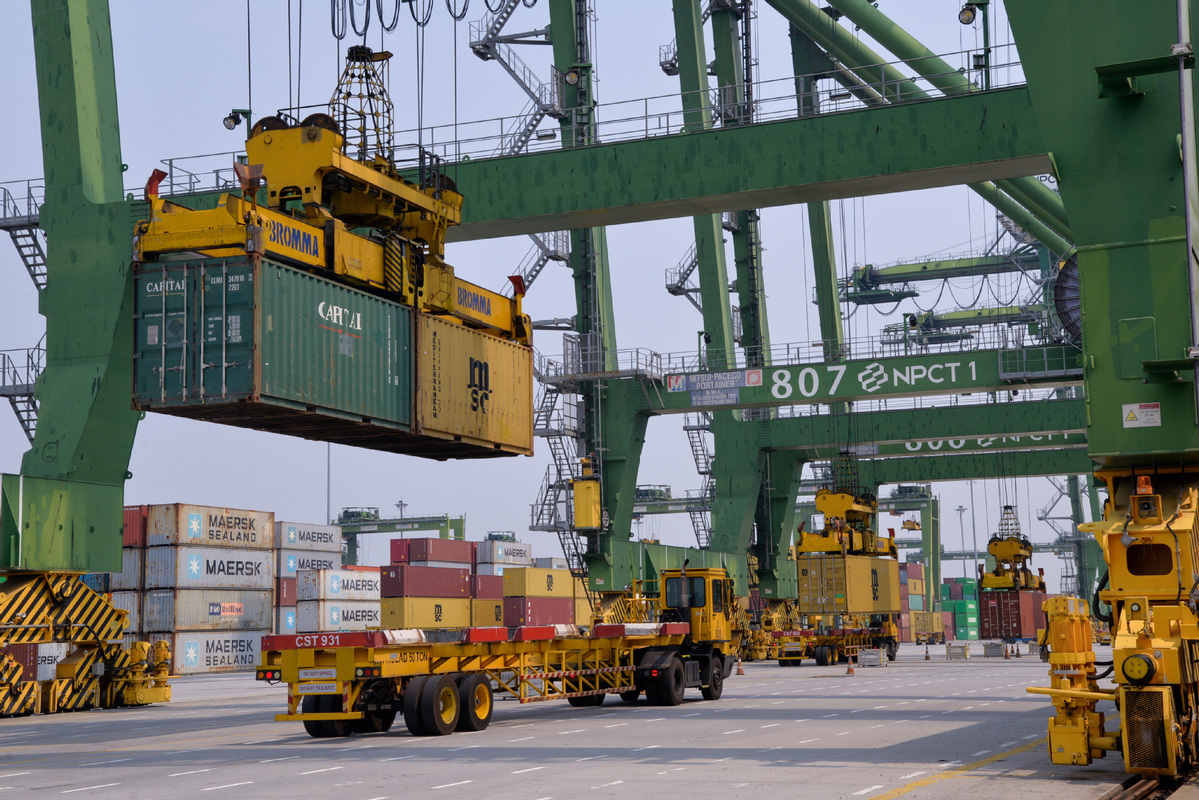Initiative spurs investment, trade across BRI landscape
By Wang Keju | China Daily | Updated: 2023-10-18 07:02

Experts applaud role of Belt, Road in improving business climate amid woes
China's trade and investment cooperation with other countries and regions involved in the Belt and Road Initiative has not only expanded in traditional areas, but also picked up pace in emerging sectors over the past decade, bringing about greater liberalization and facilitation and fostering a better global business climate, experts said.
The mutually beneficial economic and trade relations arising as a result of the initiative provide new drivers for global growth, offer innovative avenues and space for international cooperation and create novel opportunities for common development and shared prosperity, they added.
The Ministry of Commerce said China's trade in goods with other BRI economies doubled from $1.04 trillion to $2.07 trillion between 2013 and 2022, growing at an average annual rate of 8 percent. The proportion of the nation's trade in services with them jumped from 12 percent to 14.7 percent of its total services trade between 2015 and 2021, with a cumulative value of $670 billion.
Amid growing anti-globalization sentiment, rising unilateralism and increasing protectionism — coupled with the lingering impact of the COVID-19 pandemic and intensifying geopolitical tensions — global trade is currently facing headwinds, said Zhou Mi, a senior researcher at the Chinese Academy of International Trade and Economic Cooperation.
However, the open and inclusive economic cooperation between China and other BRI economies has facilitated greater market access, reduced international trade uncertainty and expanded trade volumes, which helps enhance the resiliency and stability of global supply chains and injects much-needed momentum into global economic recovery, Zhou said.
According to a recent white paper released by the State Council Information Office, by the end of August, more than 80 countries and international organizations had subscribed to the Initiative on Promoting Unimpeded Trade Cooperation along the Belt and Road, proposed by China. The nation had also signed 21 free trade agreements with 28 countries and regions.
Furthermore, infrastructure projects, including the expansion of the China-Europe Railway Express network, the expedited building of the New International Land-Sea Commerce Corridor and the construction of overseas warehouses, are also attributable to the trade growth, said Chen Jianwei, associate professor at the University of International Business and Economics.
In addition to the expansion of traditional trade, dedicated efforts have been made over the years to fuel BRI cooperation with digital technology and generate more deliverables in such new areas as cross-border e-commerce, digital payment and intelligent logistics, which have helped developing countries bridge the digital divide, Chen said.
Meanwhile, total two-way investment between China and other BRI economies stood at $380 billion during the past decade, of which $240 billion came from China, the Commerce Ministry said.
Chinese companies have invested in sectors such as energy, transportation, telecommunications, manufacturing and agriculture. These investments have not only bolstered economic growth in participating countries and regions, but created employment opportunities and contributed to technology transfers and knowledge-sharing, said Liu Xiangdong, a researcher at the China Center for International Economic Exchanges.
In particular, Chinese investment has facilitated the construction of ports, railways, roads, energy projects and other critical infrastructure. These projects have improved transportation efficiency, reduced logistics costs and enhanced connectivity among participating economies, Liu said.
Enhanced infrastructure, which facilitates the movement of goods, services and people across borders, taps the potential to boost trade, attract foreign investment and stimulate economic growth over the long run, he added.
Going forward, more efforts should be channeled to further explore new growth drivers, such as cross-border e-commerce, and address problems facing trade settlement, so as to drive more balanced growth in imports and exports of economies involved, said Xu Hongcai, deputy director of the China Association of Policy Science's Economic Policy Committee.
It is imperative to strengthen digital infrastructure construction, encourage the safe and orderly flow of data across borders and actively explore a sound system of digital trade rules that is in line with the actual development of Belt and Road economies, Xu said.
Negotiations or upgrading of free trade agreements with BRI economies should be advanced when appropriate, Xu said, adding that localities should also be encouraged to take into account their own conditions and advantages, as well as those of BRI countries and regions, in a bid to scale up well-targeted and mutually beneficial cooperation.
wangkeju@chinadaily.com.cn
























